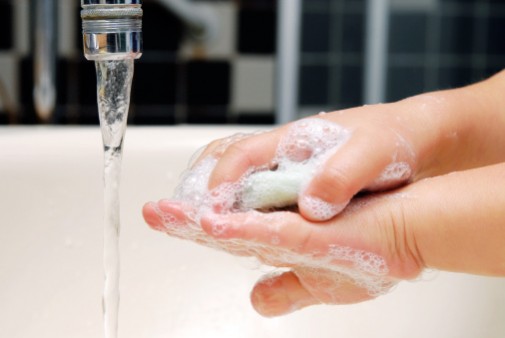What you need to know about hand, foot and mouth disease

It’s no secret especially to parents or caregivers of young children that this time of year is prime time for Hand, Foot and Mouth Disease also known as HFMD. It’s a common illness that affects infants and children typically under the age of five.
Hand, foot, and mouth disease is caused by viruses that belong to the Enterovirus genus (group). This group of viruses includes polioviruses, coxsackieviruses, echoviruses, and enteroviruses. Not to be confused with the Enterovirus D-68 that has been in the news recently.
“HFMD is basically a runny nose with painful sores in the mouth and frequently on the hands and feet. However, you can have the rash anywhere or even just in the mouth. It has a characteristic look and these sores are painful, says Advocate Medical Group pediatrician Aaron Traeger, MD in Bloomington IL. “
As this virus makes its way across the county, here are some tips from the Centers for Disease Control and Prevention to prevent this from coming to visit your house.
- Good hand-washing habits to reduce the chances of spreading these viruses. Especially, parents and other caregivers who change baby diapers should wash their hands frequently.
- Cleaning and disinfecting frequently touched surfaces and soiled items, including toys. * Avoiding close contact such as kissing, hugging or sharing eating utensils or cups with people with HFMD.
Related Posts
Comments
5 Comments
About the Author
health enews staff is a group of experienced writers from our Advocate Health Care and Aurora Health Care sites, which also includes freelance or intern writers.


















Since it has a ‘characteristic look’, I was hoping for a picture, and the link does not show one, but there is a description at least. Thanks for the information!
This illness is not fun. Usually it affects the young or very old, which is why when I got it when I was in high school my doctor was quite surprised. There is no medicine, because its a virus, so it has to run its course. Those painful sores they are referring to are small, pinhead sized, sub-dermal blisters. it is pressure that causes the pain so you can imagine walking and grabbing things forcefully are not fun, but the worst is swallowing. It is like having strep throat at its worst for 7-10 days straight. Warm fluids are nice, but I would suggest numbing the throat up with one of those menthol throat sprays before they have a meal. Mint was my favorite and was the only way I got down solid food for a week. Just take your kids to the doctor if there throat is feeling scratchy or you notice lightly discolored spots on their hands or feet and the doctors should be able to diagnosis it in a min.
A little more info about transmission, when you are considered to be contagious, and when it is safe to be around others again would be helpful. I was at a party over the weekend and there was a baby covered in blisters on his hands and around his mouth.
Hi Jenness,
The CDC http://www.cdc.gov/hand-foot-mouth/ has some really good information about the virus. Hope this helps!
My 16 year old son recently had it and developed what is considered a “rare complication”–myocarditis, an infection around the heart. Thankfully, he recovered 100%, but myocarditis can cause permanent damage to the heart. Most unfortunate is that–as mentioned–this is a virus and cannot be treated. My son complained of chest pains and it took two visits to the ER on consecutive days to determine the problem (the first doctor was an idiot), after which he was hospitalized for several days. While it is a virus, and there is no treatment, hospitalization provides support of all other functions in order to prevent the heart from further stress due to other complications. If you or your child experience chest pains, do NOT dismiss it–have it checked out. Be knowledgeable. Far better to err on the side of caution.